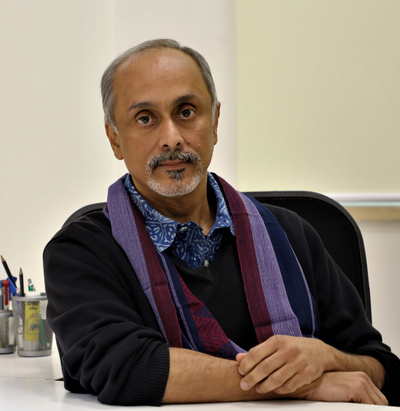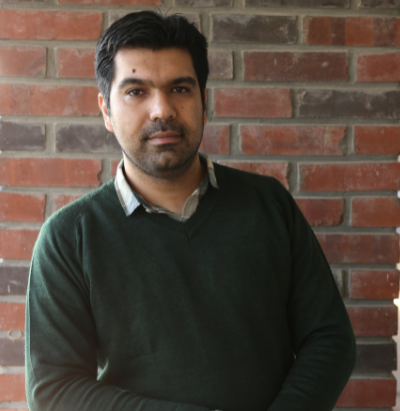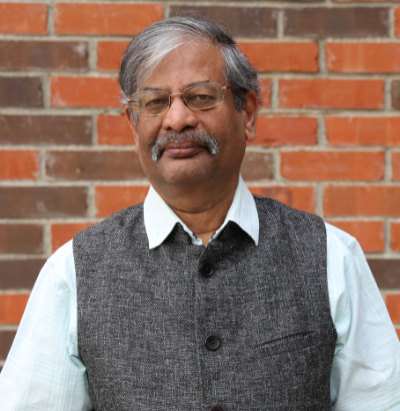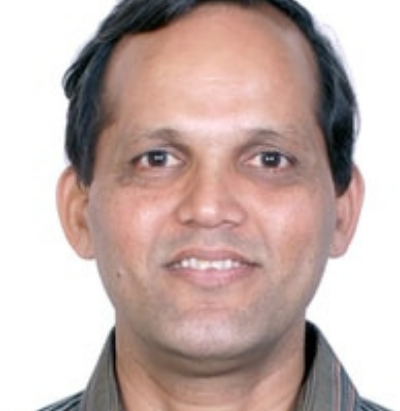Mathematics is not just a tool. It is a language, and a way of thinking and engaging with the world. Mathematical Thinking introduces students to the history, power and creative potential of mathematical and quantitative thinking and familiarizes students with some basic problem solving strategies. This course aims to give students an experience of contemporary Mathematics. One can see that Mathematics is driven by ideas, not by calculations. It is both beautiful and powerful, and it combines precision with the greatest creativity. En route, students develop a set of broadly useful problem-solving skills, gain experience in precise thinking and writing, and encounter some of history’s landmark ideas.

Department: Physics| Semester: Spring 2025
I plan to base the course on observations of the world around us as well as data regarding the world, on how one should reason quantitatively about these observations, and how one can use mathematics to advance our reasoning.
I will stress estimation and approximation techniques, including order-of-magnitude arguments and the ability to understand graphs and plots and how different functions “should” behave. I will do some combinatorics, as well as probability and statistics including Bayesian methods, showing how they are, in fact, how we reason in practice about the world. Examples such as Simpson’s paradox, the prosecutor fallac, fractals, and the use of Benford’s law in detecting financial fraud will all be featured.
Some part of the course will describe models, how to construct them, and how to interpret them, such as the random walk and its many applications, in physics as well as in finance.
Some specific areas of science that I plan to draw from when constructing my examples are climate change, neural networks and machine learning, infectious diseases, energy and sustainability, population growth, inequality measures, and genetics.

Department: Mathematics| Semester: Spring 2025
Observe the environment surrounding you; it is filled with technology that employs numbers and codes to perform remarkable tasks. This enables activities such as online shopping, sending delightful emojis to friends, or even reading this very text. All of this is made possible through extraordinary engineering, which is grounded in fundamental physical laws that we can represent mathematically, allowing us to make informed predictions. This is one of the many places where a mathematical model allows us to make predictions that can be employed for other uses.
In this course, we will explore various methods of utilizing mathematics to model problems and apply these models to generate predictions that can significantly impact our daily lives. We will go over the enderlying mathematics that would be required to come up with such models.
The emphasis of the course will be on the conceptual framework and methodology rather than on computational techniques. Throughout the course, we will introduce several tools designed to facilitate calculations and enhance visualization.
Throughout the course, we’ll pass through the following topics:

Department: Mathematics| Semester: Spring 2025
This is a foundation course introducing a collection of areas using Mathematics. Will broadly follow the book of Christopher Thomas – Mathematics for Liberal Arts Majors (A Shaum’s Outline Series book). The exact plan and sequence of topics will be shared during the first day of the lecture.
Bhargab Bhattacharya
Department: Computer Science| Semester: Monsoon 2024
Even habitual activities such as driving a car, walking past a busy intersection, managing weekly expenses, or scheduling meetings, need quantitative reasoning intertwined with decision making, often in the presence of incomplete or uncertain data. Viewing through the lens of mathematical formalism, one would learn to appreciate the art of modelling instances, the elegance of logical reasoning, and to gauge the role of randomness and chance in the events occurring around us. This course will enable students to sharpen their mind with the power of creative thinking and open doors to an enchanting playground where by solving puzzles and quizzes, they would know how to unearth the underlying abstractions and apply them for solving real-world problems, regardless of their prior knowledge of mathematics. The clever tricks of geometry and Boolean algebra, fascinating insights from graph theory, the beauty in algorithms, and the probabilistic approach to foreseeing an event, would boost up their confidence and proficiency. The vast repertoire of mathematical techniques blended with creativity and rigor will not only change their perspectives towards problem-solving but also provide them boundless opportunities to explore many uncharted territories such as law, finance, healthcare, and social sciences, by reducing challenges therein, to bare essentials. At the end of the course, students are likely to experience the joy of understanding complex problems with precision and clarity while fostering a sense of wonder and discovery. Having laid strong pillars on mathematical fundamentals and empowered with the subtle art of reasoning, they would naturally evolve as leaders in their respective professional frontiers.
During the course we will walk through a selection from the following topics:
1. Puzzles and paradoxes through patterns and numbers; fallacies in perception; coin-rotation paradox, the mystery of rotating gears; sequences; the art of modelling and judgement;
2. How to count, Hippasus’ discovery of irrational numbers; the beauty of primes, the fundamental theorem of arithmetic; power of binary numbers; Magic square in celebration of Ramanujan’s birthday;
3. Pigeon-Hole Principle, basic combinatorics, the world of palindromes;
4. Managing finances: The king’s chessboard – the magic of geometric progression and compound interest; How many years will I take for my money to double? What is the value of my home loan?
5. Revisiting Euclidean geometry; the marvels of geometry in ancient architectures; the enigma of shortest path; the mystery of solar and lunar eclipses;
6. Arithmetic via geometry: the power of ruler and collapsible compass; computing addition, multiplication, and square root using ruler-and-compass; what ruler-and-compass is unable to do; integer geometry and digital imaging;
7. The beauty of polygons; applications to cognitive assessment; how to guard an art gallery;
8. Sets, relations, and functions, Russell’s paradox, equivalence classes and partitions, power set, principle of inclusion and exclusion, counting via sets;
9. How to win in arguments: Proof techniques, inductive and deductive reasoning, disproving by counterexamples;
10. Logical reasoning: Boolean algebra and propositional logic, implications and inferences;
11. Algorithms: Sorting, GCD, exponentiation, Tower-of-Hanoi, recursion, trees and graphs; The Bridges of Königsberg, Traveling Salesperson Problem;
12. Playing dice: Probability and ambiguity, randomness and chance, birthday paradox, mean, median, variance, distributions, expectation; stock-market strategies.

Department: Economics | Semester: Monsoon 2024
The course will begin with pre-requisite tools of quantitative thinking vis-a-vis the number system, set theory, logic, probability and statistics. We will then learn how to use some of these tools to study (i) fairness concerns in the division of scarce resources (fair division models), (ii) collective decision processes in committees and democracies around the world (voting models), and (iii) how to act optimally in competitive social and political settings (applications of game theory). By the end of the course, students would have a basic understanding of the most widely used mathematical tools in the liberal arts and their applications to different aspects of society. They will learn how to approach different economic problems- by reducing them to their bare essentials via modelling and to mathematically analyze their underlying structural and logical patterns.

Department: Mathematics | Semester: Monsoon 2024
In this course we will begin by understanding if every one of us is capable of doing mathematics and if so to what extent. Moving on we trace the way various civilisations counted and measured. We will use our sense of figuring out bigger and smaller and find a way to estimate how many times we blink in a lifetime or count the number of grains of sand in a beach and many many more such tasks that appear impossible at first.
We will figure out if we can put a number to chance and use it to predict if some events happen and use the process to figure out if some goods will sell. We will discuss fairness in sharing and see various ways to share fairly and see if we can always be fair or not Many more such practical uses of mathematics will be dealt with in this course.
The course broadly follows the book “Mathematics for Liberal Arts Majors” by Christopher Thomas, but with our own interpretation.

Department: Mathematics | Semester: Monsoon 2024
Mathematics is central to modern day knowledge systems. It is one of the three R’s (Reading, `Riting and `Rithmetic) and is considered as the Queen of the Sciences. For those who use it, it is a science; for those who practise it, it is an art.
Some are passionate about it, some despair at hearing about it.
What is mathematics? What is it about that excites such contradictory responses?
The course will try to give an introduction to some of the central themes, ideas and constructs in mathematics illustrated by some concrete examples.
